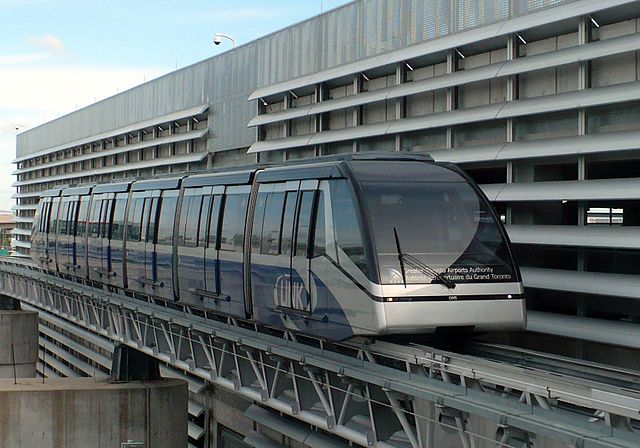Top Qs
Timeline
Chat
Perspective
List of driverless train systems
From Wikipedia, the free encyclopedia
Remove ads
This is a list of driverless train systems, which are capable of GoA3 and GoA4 (GoA3+) according to the Grade of Automation classifications specified by the standard IEC 62290‐1. These are explained diagrammatically by the UITP. This list focuses heavily on trains in the classical sense used for large-scale railways for passengers and freight but does include a few people mover systems. For a similar list for GoA2, see list of semi-automatic train systems.
Remove ads
Grade-of-Automation 3 systems
Summarize
Perspective
These systems are capable of driverless train operation (DTO), although some operators may choose to staff trains anyway.
GoA3 – Americas

GoA3 – Asia
GoA3 – Europe
Remove ads
Grade-of-Automation 4 systems
Summarize
Perspective
These systems are capable of unattended train operation (UTO), although some operators may choose to staff trains anyway.
GoA4 – Americas

GoA4 – Asia

GoA4 – Europe

GoA4 – Oceania

Remove ads
Future systems
Summarize
Perspective
Americas
Asia
Europe
Oceania
Remove ads
Notes
- With train captains monitoring in cab
- With train captains monitoring in cab
- UTO system jointly developed by Thales Group and Shanghai Electric.[3]
- Previously operated in manual mode
- To be converted to GoA4
- With train captains monitoring in cab.
- Rebuilt in 1981
- Rebuilt in 2016
- This railroad is GoA2 capable, able to run a train without any person on board for the entire trip out to the Four Corners Generating Station and back to the mines.[citation needed]
- UTO system jointly developed by Thales Group and Shanghai Electric.[3]
- With train attendants to drive trains in the event of a disruption.
- With train attendants to drive trains in the event of a disruption.
- Original system opened in 1990; upgraded to current system in 2006.
- The largest fully automated rapid transit network in the world with 202.4 km (125.8 mi) of automated rail lines.[50] Trains may have an attendant on board. Only North–South line and East–West line has driving cabins.
- North–South and East–West lines were converted from a lower GoA to a higher GoA
- System started with an attendant on board each train full-time. Gradually over time, the presence of attendants decreased. By September 2017, trains have attendants only while in long tunnel sections.
- Red Line at 52.1 km (32.4 mi). The longest driverless network in the Middle East.
- Converted from manual to automated operation
- Rubber-tyred trains controlled by a system known as MAGGALY (Métro Automatique à Grand Gabarit de l'Agglomération Lyonnaise).
- First fully automatic metro in Italy. First section opened for the 2006 Winter Olympics, completed in 2014.
- The Rio Tinto "AutoHaul" system on its iron ore railways in the Pilbara.[61] This system is GoA 4 capable, able to run trains without a single person aboard for the entire trip out to the mines and back to the port. In October 2017 the first fully autonomous test took place over a 100 kilometres (62 mi) section.[62] The group was granted accreditation by Australia's Office of the National Rail Safety Regulator, approving the autonomous operation of iron ore trains in the Pilbara region of Western Australia.[63]
- First completely driverless metro line in Australia.
- GoA4
- UTO Fully driverless system.
- Upgrade from GoA2 to GoA4
- Upgrade from GoA2 to GoA4
- Upgrade from GoA2 to GoA4
- Upgrade from GoA2 to GoA4
- Conversion from manual to driverless operation
- Upgrade from GoA2 to GoA4 as part of Subway Modernisation.
Remove ads
References
Wikiwand - on
Seamless Wikipedia browsing. On steroids.
Remove ads